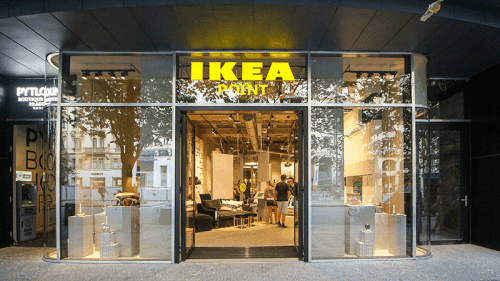In a panel discussion at ULI South Carolina’s Capital Markets Conference on Kiawah Island, participants heard from several key players in the site selection space—in both the public and private sectors. Panelists said that employers making the decisions about where to establish or relocate their businesses rarely fall in love at first sight, with timing and compromise both playing a role in the ultimate decision.
Steve Dykes, director of the Charleston County Economic Development Authority and a 25-year veteran of the area’s economic development efforts, moderated the panel. He started by sharing the results of two recent surveys.
Site Selection magazine surveyed 72 industry consultants about what they viewed as key motivators for companies seeking new locations, which were as follows: workforce; transportation infrastructure; availability of sites and buildings; state and local tax structures; and incentives. In terms of competitiveness of regions, respondents favored the Sunbelt and the Midwest. Texas was deemed the most competitive state, with North Carolina a close second.
The poll stated that future development would likely involve more logistics and distribution sites, more headquarters and back-office space, and advanced manufacturing projects. The “number-one deal killer” for this crowd was a “lack of funding or not having the right incentives,” something Dykes would refer to again later.
When asked what could be done to improve a location’s site selection process, ideas ranged from “better tax structures, streamlining of permit processes, [to] passing right-to-work legislation.”
Another poll, conducted by Area Development magazine, surveyed site selection decision makers at select businesses. Half were in manufacturing and distribution; half worked for businesses with fewer than 100 employees. Only 20 percent had an international presence. Half of those surveyed said they planned to open a new facility within five years, citing the new tax law and regulatory reforms as motivators.
Of these employers, nearly a quarter said they would open a manufacturing site; 19 percent said warehouse and distribution; 17 percent said shared services; 9 percent said back office and call centers; and 8 percent said headquarters space. The Deep South and Midsouth led as prime locations for 39 percent of the respondents; 14 percent would choose the West; 11 percent opted for the Mid-Atlantic states; and 9 percent favored the Midwest.
“We see a lot of convergence on what employers think is important,” said Dykes. Four topics emerged as key indicators of the site selection process: “finding talent; having a robust transportation and logistics system in place; finding the right site; and building a financial case—tax structure, business climate, and incentives.”
Dykes asked panelist Hunter Harris to elaborate on the research, given Harris’s current role as operations director at Ingevity, a chemical manufacturer and supplier with offices across the country.
In terms of finding the right site and attracting talent, Harris said his first step is usually “benchmarking,” or reviewing companies within his own industry to assess how they have handled site selection and matching workforce to place.
“We’re looking for places where we can recruit people who might want to stay in our industry and our company for years to come,” said Harris. The new generation of workers, he added, “want walkability and amenities. We want to enhance the communities around us and draw people in.”
Panelist Hampton Pitts, chief operating officer and partner at LStar Ventures, recently led a bid for the new Amazon headquarters to be located roughly 12 miles (19 km) south of Boston. The city of Boston proper ultimately won the bid, but Pitts said the entire process was helpful in determining what employers are looking for.
“With the Amazon RFP, there were 15 to 18 criteria that were very important to them,” he said, adding that many of them had to do with quality of life for employees.
His current home city of Raleigh, North Carolina, also was in the running. “We saw commonalities with Raleigh and Boston,” Pitts said, “in terms of quality of life, an educated workforce, universities, R&D.” But Boston’s public transportation infrastructure was hard to beat.
The third panelist, Micah Mallace, director of strategic projects for the South Carolina State Ports Authority, said the Charleston port is now in the “sweet spot” when it comes to logistics, though it hasn’t always been so.
“We were a great port to hate ten years ago,” he admitted. “We chased away 40 percent of our business. In ’09–’10, we changed our perspective. We realized it was all about volume, so we became the most customer-friendly port, open to saying yes and open to creative—even bizarre—solutions to fix situations even beyond our own terminals.
“Now, we have good visibility in the Southeast and help companies set up and improve their supply chains. We outhustle the competition.”
Mallace noted two dynamic shifts in the marketplace: the growth of e-commerce and the increased cost of trucking. Both bring challenges for companies trying to move product around the country, which has affected where companies want to locate.
Dykes closed out the discussion by asking panelists about the importance of incentives.
“They matter, but they’re not the total driver,” said Harris. “If the business case is bad, incentives aren’t going to change that. It’s more about how they’re going to complement what you’re trying to accomplish for your business.”
“There are myriad formulas of incentives,” said Pitts, noting that some may be more successful than others. The process is “most effective when it’s collaborative,” he added, “when all the parties are involved in the decision making.”
Mallace agreed that incentives are great, but relationships are key. One client told him recently: “What you’ve done to creatively address the challenges we’ve had throughout the process is worth its weight in gold.”
To this panel of experts, the site selection process is complex, competitive, and filled with wins and losses. Still, it is worth the effort when the right city attracts just the right employer—for all the right reasons.




